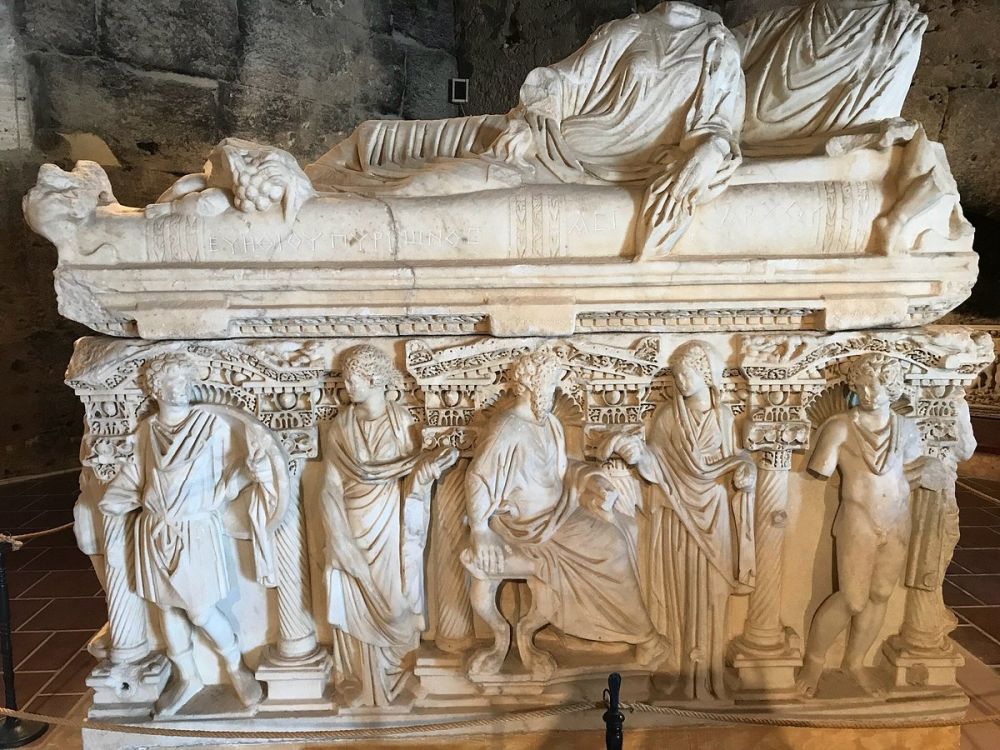

The history of tourism in Hierapolis-Pamukkale dates back to antiquity when the ancient Greco-Roman city of Hierapolis was founded in the 2nd century BC. This UNESCO World Heritage site has been a destination for those seeking its therapeutic hot springs for centuries. The site attracted visitors from different civilizations, notably the Romans and Byzantines, who built baths, temples, and other monumental structures, many of which became ruins over time and pique the curiosity of today's visitors.
Modern tourism to Pamukkale and the Hierapolis Archaeology Museum began to pick up in the 20th century, as archaeological discoveries started to be systematically studied and preserved. With the region's recognition by UNESCO in 1988, concerted efforts were made to protect both the historical ruins of Hierapolis and the natural wonder of Pamukkale's travertine terraces.
The Hierapolis Archaeology Museum is housed in the former Roman Bath, one of the grandest structures in Hierapolis, built during the Roman Empire's peak. The museum presents a vast array of artifacts found not only in Hierapolis but also from the surrounding areas, showcasing the historical significance and the cultural wealth of the region. Artifacts on display include sarcophagi, temple friezes, statues, and steles, with exhibits dating back to the Hellenistic period, through the Roman and Byzantine eras.
The trend in tourism at Pamukkale has lately been shifting towards sustainability and responsible travel, in alignment with global tourism trends aimed at preserving natural and historical sites for future generations. This move towards eco-friendly tourism has led to the implementation of protective measures for the travertine terraces, such as restricting visitor access to certain areas to prevent erosion.
Visitors are now also being encouraged to explore the area's history by visiting the museum, engaging in more educational tours, rather than just the photogenic aspects of the travertine pools. Authentic local experiences, such as visiting nearby villages and tasting local Turkish cuisine, are also being emphasized more than before.
Moreover, there has been a rise in 'wellness tourism’ at Pamukkale, with people coming to bathe in the thermal springs, as the ancients once did, seeking their reputed curative properties. This form of tourism is championed by both the historical importance and the continued belief in the rejuvenating powers of Pamukkale's mineral-rich waters.
When planning your visit to Hierapolis-Pamukale, it is best to allocate sufficient time to explore both the ruins and the museum thoroughly. The site is vast, rich in history, and offers insights into ancient civilizations and their ways of life. Moreover, the opportunity to bathe in the famous terraces under the watchful eyes of millennia-old ruins provides a truly unique and enlightening experience—one that continually draws visitors from all over the world.
The region has also continued to improve accessibility and facilities to accommodate the different needs of global travelers, making it easier for everyone to enjoy the stunning combination of natural beauty and historical depth that Hierapolis-Pamukkale has to offer.